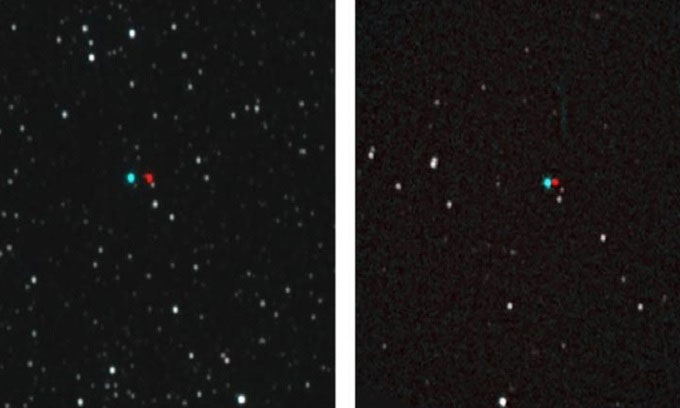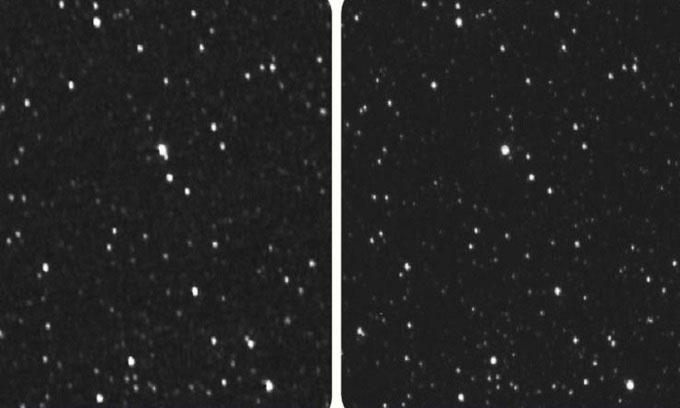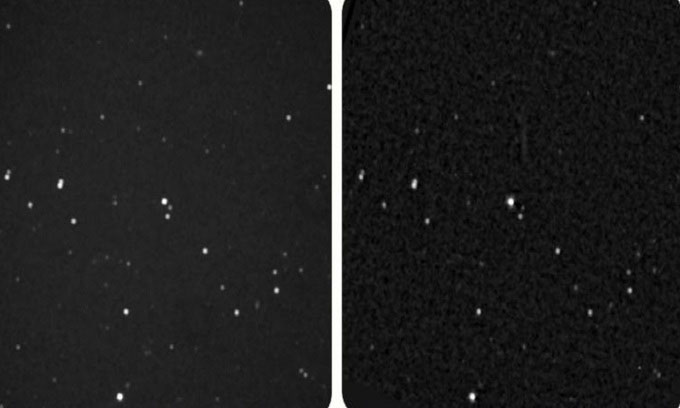NASA sends images to Earth from a distance of 7 billion km
Photographs taken by the New Horizons spacecraft show stars seem to be in a different position than when viewed from Earth.


Photo of Proxima Centauri (left) and Wolf 359 (right) of New Horizon. (Photo: CNN).
This is the first time a spacecraft has recorded the "parallax effect". Parallax is the change in the apparent position of a point on the observation platform, when it is tracked from two different positions. "It can be said that New Horizons is observing an unfamiliar sky, unlike what we see from Earth , " said planetary scientist Alan Stern, lead researcher at the New Horizons project at Southwest Research Institute. in Boulder, Colorado, said . "that allows us to consider the nearest star in a position different from the view from earth."

Proxima Centauri star in the image taken from New Horizon (left) and the ground telescope. (Photo: CNN).
New Horizons is flying in interstellar space, like the Voyager duo. Earlier, the ship flew over Pluto and its moons in January 2019. In April 2020, at a distance of nearly 7 billion kilometers from Earth, New Horizons turned its long-range telescope at nearby stars Proxima Centauri and Wolf 359 at a distance of 4.2 from our planet, and 7,795 light years.

Wolf star 359 in image taken from New Horizon (left) and ground telescope. Photo: CNN.
The two stars appear to be in different positions with the parallax effect, meaning they appear to shift from the background seen by New Horizons from another angle. Scientists use the parallax effect to measure the distance to a star. Stars, including the Sun, are always on the move. But we are so far away from them that it is very difficult to track this movement and cannot detect changes with the naked eye.
However, the team was able to compare photos of New Horizons with the same day shot with a ground telescope, including the Las Cumbres Observatory in California, the United States, the Siding Spring Observatory in Australia and the Observatory Mount Lemmon in Arizona, USA. Spacecraft sends photos to Earth via radio signals. The signal travels at the speed of light and reaches Earth after about 6.5 hours.
- Video: The most beautiful images ever seen about the Earth
- Review NASA photos to see how terribly the Earth has changed
- Photo of the Earth and the Moon from a distance of more than 60 million km
- NASA dismisses the information of giant meteorite
- Decode the distance from the Earth to the Sun.
- The correct distance from Earth to the nearest galaxy
- NASA revealed information about large asteroids just hitting the Earth
- After the Pluto, where will NASA drive New Horizons?
- A series of wonderful images of Jupiter are sent from the Juno-NASA ship
- Video: A UFO object is parked in NASA's lab yard
- Earth History through images (Part I)
- Images show the Earth is gray, not blue
 Van Allen's belt and evidence that the Apollo 11 mission to the Moon was myth
Van Allen's belt and evidence that the Apollo 11 mission to the Moon was myth The levels of civilization in the universe (Kardashev scale)
The levels of civilization in the universe (Kardashev scale) Today Mars, the sun and the Earth are aligned
Today Mars, the sun and the Earth are aligned The Amazon owner announced a secret plan to build a space base for thousands of people
The Amazon owner announced a secret plan to build a space base for thousands of people Solar panels capture invisible energy at night to produce electricity
Solar panels capture invisible energy at night to produce electricity  British Doctor Reveals How to Make Your Brain '30-50 Years Younger', So Simple Anyone Can Do It
British Doctor Reveals How to Make Your Brain '30-50 Years Younger', So Simple Anyone Can Do It  Discovering more than 2 million new crystal structures, Google's AI shortens 800 years of research for humanity
Discovering more than 2 million new crystal structures, Google's AI shortens 800 years of research for humanity  World's rarest whale carcass washes ashore in New Zealand
World's rarest whale carcass washes ashore in New Zealand  Japan develops breakthrough medicine from... volcano crater
Japan develops breakthrough medicine from... volcano crater  Based on new theory, physics 'captures' a photon for the first time
Based on new theory, physics 'captures' a photon for the first time 